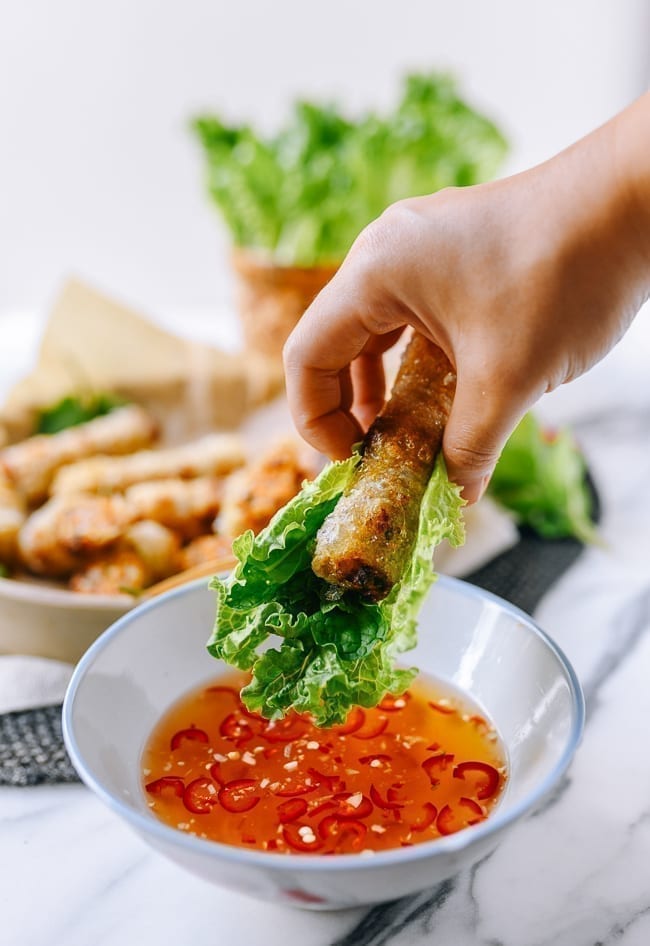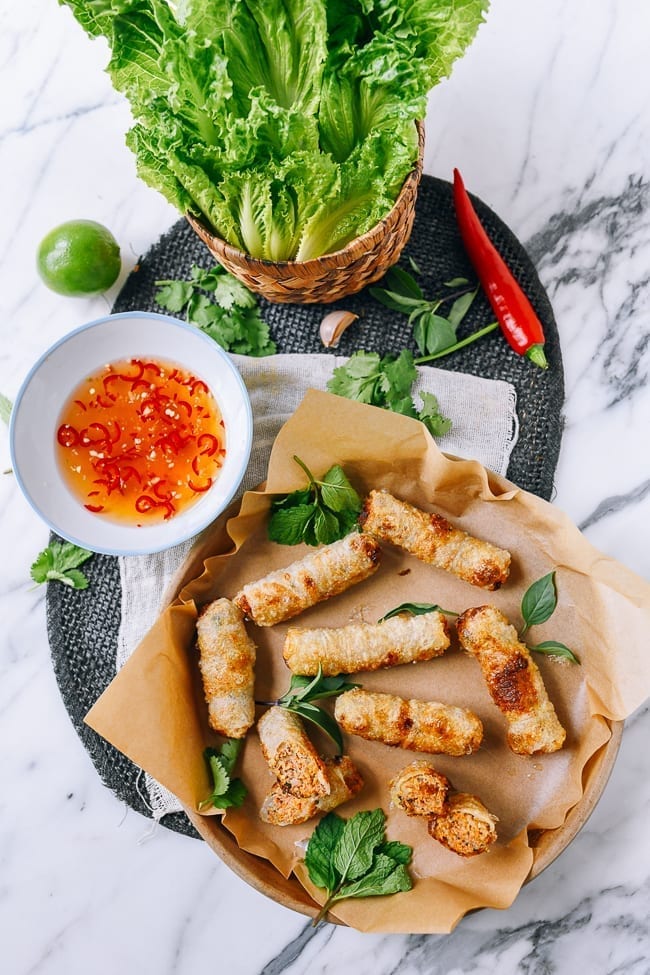How to Make Cha Gio (Vietnamese Fried Spring Rolls)
Cha Gio, also known as Vietnamese fried spring rolls, is a popular dish that combines crispy fried wrappers with a flavorful, savory filling. Whether you’re enjoying them as an appetizer or part of a larger Vietnamese meal, Cha Gio is a treat for the taste buds. In this guide, we will walk you through the steps to make perfect Cha Gio, share tips for the ideal fillings, and show you how to master the frying technique.

Ingredients Needed for Cha Gio
Before we dive into the preparation process, it’s essential to gather the right ingredients for this dish. Freshness and quality are key to ensuring the rolls turn out delicious and crispy.
For the filling:
-
Ground pork: The base of the filling, providing richness and flavor.
Trending -
Shrimp: Adding shrimp gives the rolls a seafood flavor.
-
Glass noodles: These give a nice texture to the filling and help bind everything together.
-
Wood ear mushrooms: A common ingredient in Vietnamese cuisine, offering a subtle earthy flavor.
-
Carrots: Freshly grated for a touch of sweetness and crunch.
-
Garlic: Minced garlic adds a deep savory element.
-
Fish sauce: For seasoning and umami.
-
Black pepper and salt: To taste.
For the wrapper:
-
Spring roll wrappers: Available in most Asian grocery stores, these are thin, flexible sheets made from rice flour.
-
Vegetable oil: Used for frying, vegetable or peanut oil works best for a crispy texture.
Step-by-Step Guide to Making Cha Gio
Making Cha Gio is simple once you have all the ingredients ready. Let’s break it down into easy-to-follow steps:
1. Prepare the Filling
Start by preparing the filling. In a large mixing bowl, combine the ground pork, chopped shrimp, soaked glass noodles, grated carrots, and sliced wood ear mushrooms. Add minced garlic, fish sauce, salt, and black pepper to taste. Mix everything thoroughly until the ingredients are well combined.
2. Wrap the Spring Rolls
Lay a spring roll wrapper flat on a clean surface. Place a small amount of the filling near the edge of the wrapper. Fold the sides over the filling, then roll it up tightly, ensuring the filling is securely enclosed inside the wrapper. Use a little water to seal the edge of the wrapper to prevent it from opening during frying.
3. Fry the Cha Gio
Heat the vegetable oil in a large frying pan or wok over medium-high heat. Once the oil is hot, carefully drop the wrapped spring rolls into the oil, a few at a time. Fry until golden brown and crispy, which should take about 4-5 minutes. Make sure to turn them occasionally for even frying.

4. Drain and Serve
Once fried, remove the Cha Gio from the oil and place them on a plate lined with paper towels to drain excess oil. Serve them hot with nuoc cham, a Vietnamese dipping sauce made from fish sauce, lime juice, sugar, and chili.
Tips for Making Perfect Cha Gio
Creating Cha Gio can seem daunting, but with these tips, you’ll be able to make them like a pro:
-
Don’t overstuff the rolls: It’s tempting to load up the wrappers, but overstuffing can cause the rolls to break during frying. Aim for a small, even amount of filling.
-
Fry in batches: To avoid overcrowding the pan, fry the rolls in batches. This ensures they cook evenly and become crispy.
-
Adjust the seasoning: The fish sauce and pepper are the primary seasonings in Cha Gio. Taste the filling before wrapping to adjust the seasoning if needed.
-
Use the right oil: Peanut or vegetable oil is ideal for deep-frying. These oils can handle the high heat needed for crispy Cha Gio.
Serving Suggestions for Cha Gio
Cha Gio is often served with fresh vegetables, herbs, and a dipping sauce. To enhance the flavors, consider pairing the rolls with the following:
-
Lettuce leaves: Fresh lettuce is perfect for wrapping the crispy rolls and adding a fresh crunch.
-
Fresh herbs: Mint, cilantro, and Thai basil are common accompaniments that bring freshness to the dish.
-
Nuoc Cham: This sweet, salty, and tangy dipping sauce is a must-have for Cha Gio. It’s made from fish sauce, sugar, lime, and chilies, balancing the richness of the fried rolls.

Frequently Asked Questions About Cha Gio
1. Can I make Cha Gio ahead of time?
Yes, you can prepare the rolls ahead of time and store them in the fridge for up to a day before frying. Just make sure to cover them with a damp cloth to keep them from drying out.
2. Can I freeze Cha Gio?
Yes, you can freeze Cha Gio before frying. Arrange them in a single layer on a baking sheet and freeze until firm. Once frozen, transfer the rolls to a freezer-safe bag. Fry them straight from the freezer, adding a few extra minutes to the cooking time.
3. Can I use other proteins in Cha Gio?
While pork and shrimp are the most traditional choices, you can substitute the proteins with chicken, beef, or tofu for a vegetarian option.
4. How do I make Nuoc Cham sauce?
To make Nuoc Cham, combine 3 tablespoons of fish sauce, 2 tablespoons of lime juice, 1 tablespoon of sugar, and 1 finely chopped chili. Stir until the sugar dissolves, and adjust the seasoning to taste.
5. What’s the difference between Cha Gio and Goi Cuon?
While both are types of spring rolls, Goi Cuon (Vietnamese fresh spring rolls) are served fresh and wrapped in rice paper, while Cha Gio is deep-fried and served crispy.
Why Cha Gio is Loved
Cha Gio is more than just a dish—it’s an experience. The crispy texture contrasts perfectly with the savory, aromatic filling. Whether enjoyed at a family gathering or as part of a meal, Cha Gio brings people together. It embodies the essence of Vietnamese cooking: fresh ingredients, careful preparation, and bold flavors.
Making Cha Gio at home allows you to enjoy this dish with friends and family, bringing a piece of Vietnam to your kitchen. So, gather your ingredients, follow the steps, and create your own batch of delicious Cha Gio today!
For more Vietnamese recipes and cooking tips, check out our guide to making pho or discover how automation tools for social media can help you grow your platform effortlessly!
